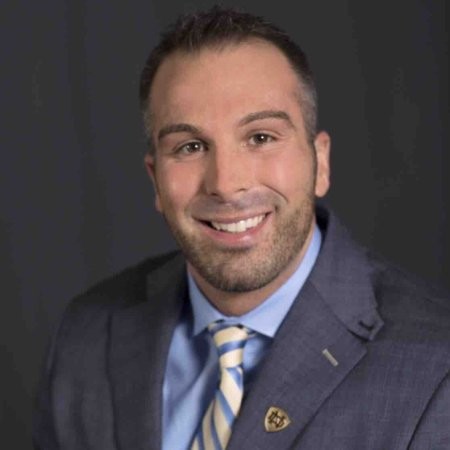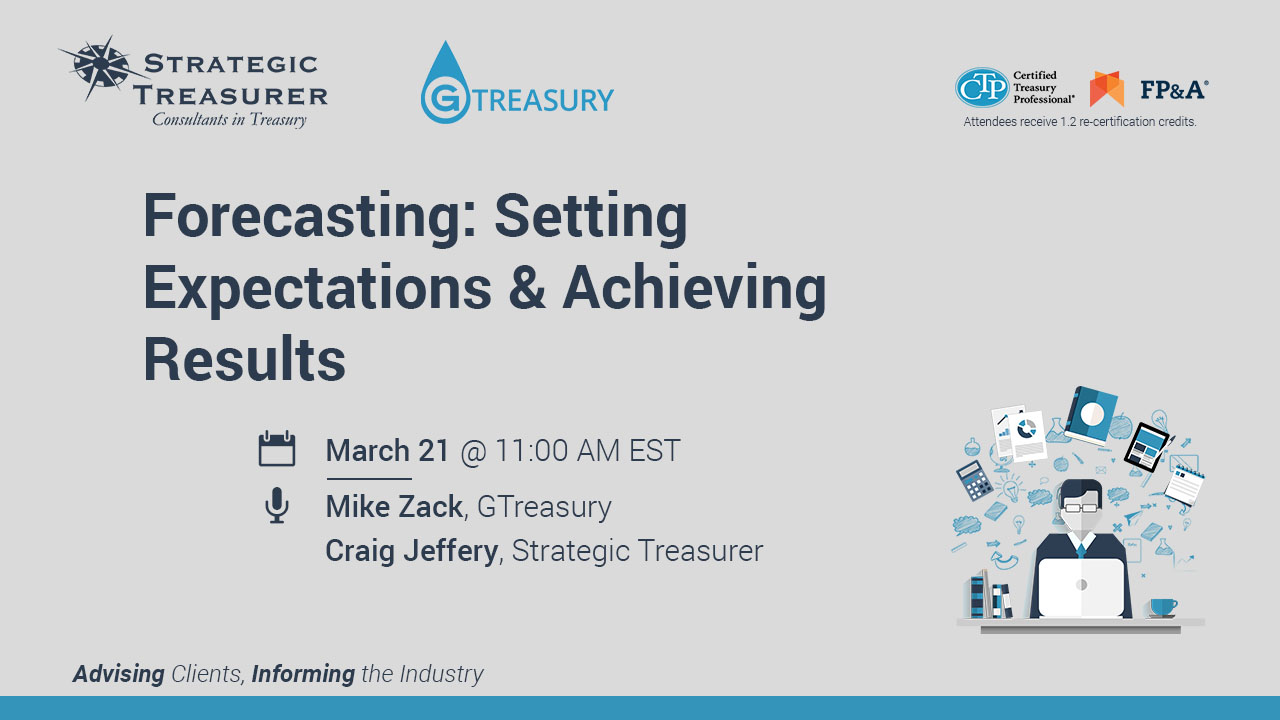
Episode 42
Key Factors of Forecasting Success
Nearly all organizations are keenly focused on forecasting. For well over a decade, it has been a top priority for companies. And, they spend far too much time working on their forecast. They run into a variety of pitfalls which impact their forecasting ability, accuracy, and value. Craig Jeffery of The Treasury Update Podcast talks with Mike Zack of GTreasury on the key factors of forecasting success. With a step-by-step approach, they discuss how to systematize your forecast, avoid pitfalls, enhance global visibility and maybe even reduce fraud losses. Listen in to find out how you can better position your organization for success.
Host:
Speaker:
Craig Jeffery, Strategic Treasurer


Mike Zack, GTreasury


Related Resources
Forecasting: Setting Expectations & Achieving Results
Webinar Replay
Everyone talks about cash flow forecasting. Improving the forecast is on nearly everyone’s yearly objective list, yet few rate themselves as excellent or even very good at forecasting. There are significant challenges in forecasting well. This session will help participants understand the context of good forecasting and explore how to overcome the major issues and challenges faced by many organizations. This will help attendees improve their forecasting processes and overall forecast.
Watch the replay today!
Why Modern Treasury Technology Matters
Craig Jeffery, and GTreasury’s Chief Product and Technology Officer, Alok Tyagi, discuss some of the largest challenges facing today’s digital treasury professional. Listen in as they evaluate how technology is being leveraged to address these obstacles and learn of some ongoing innovations that will impact both the future use of these systems as well as future workflow realities for treasury operations.




